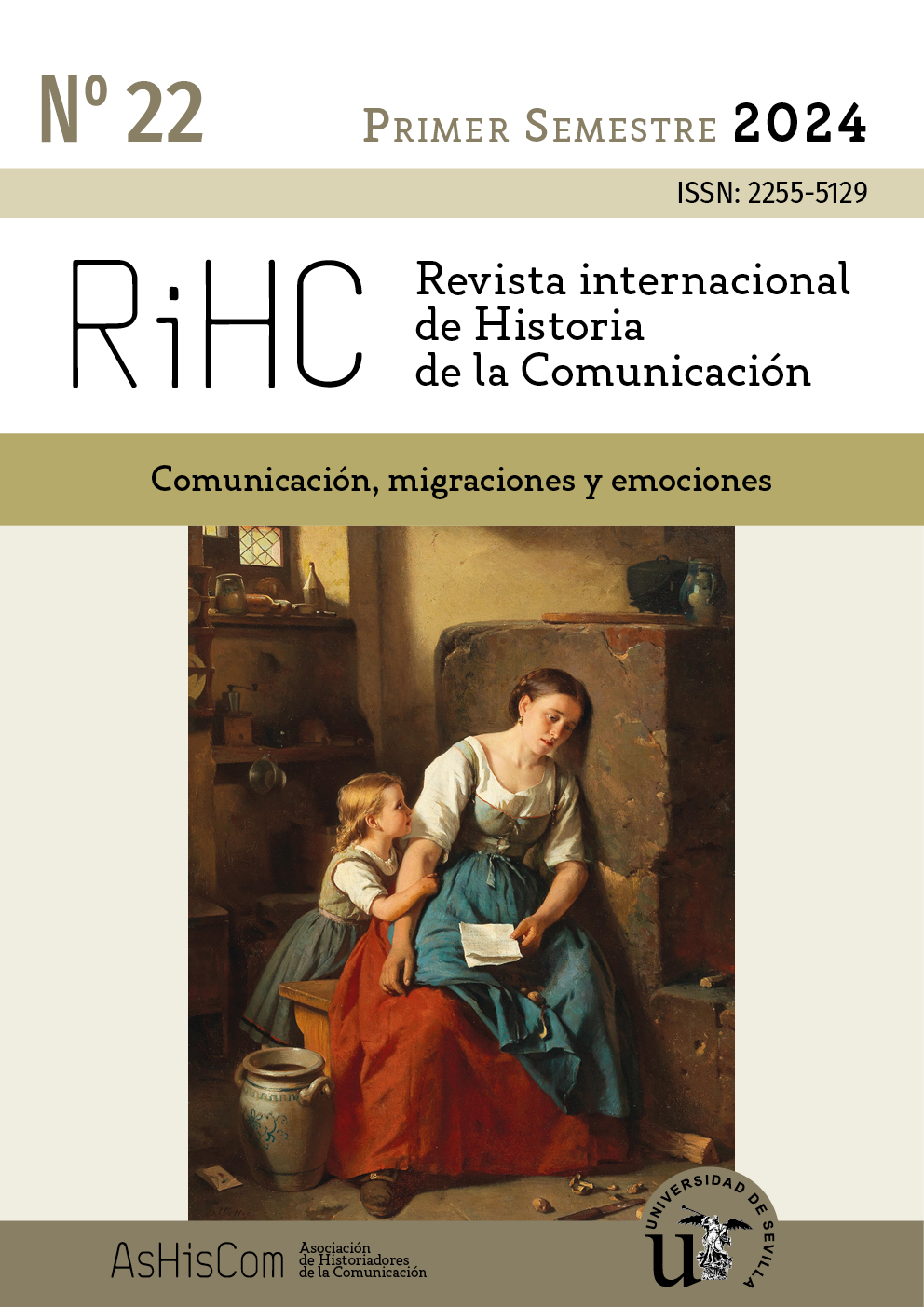Emerging cinematographic communication practice: bodies in movement in Terra estrangeira (1995), by Walter Salles and Daniela Thomas
DOI:
https://doi.org/10.12795/RiCH.2024.i22.04Keywords:
cinematographic enunciation, between-place, identities in transit, audiovisual mediumAbstract
In this paper we propose to show how cinema constitutes a particular and emerging means of communication for the understanding of dislocated identities, in processes of deterritorialization and reterritorialization of bodies in permanent transit. In this way, we are interested in giving an account of the new territorialities of identity spaces in conflict, in ambivalent and uncertain trans-local scenarios. We will observe how a third space of cinematographic enunciation is configured, as a split interstitial place, as an inscription and articulation of the hybridity of corporealities in continuous displacement. In this sense, our fundamental purpose will be to study Terra estrangeira (1995), by Walter Salles and Daniela Thomas, as an audiovisual medium that designs mechanisms of construction of the problematic identities of immigrants, as a source of interpretation of the sensibilities and emotions of subjectivities in transit. This study will be carried out based on the contributions of Jesús Martin Barbero's Communication Theory and the theoretical reflections of Arjun Appadurai and Homi Bhabha.
Downloads
References
APPADURAI, A. (2001). La modernidad desbordada. Dimensiones culturales de la globalización. Buenos Aires: Trilce.
BHABHA, H. (2002). El lugar de la cultura. Buenos Aires: Manantial.
- (2013). Nuevas minorías, nuevos derechos. Notas sobre cosmopolitismos vernáculos. Buenos Aires: Siglo Veintiuno.
CORDEIRO FREIRE, J. (2009). Identidade e exíílio em Terra estrangeira. São Paulo: ANNABLUME. DE SOUZA Santana Coelho, G. C. y MAGALHÃES-Nogueira, L. (2011). “Cansaço e não pertença: a importância da canção na trilha sonora do filme Terra Estrangeira, de Walter Salles”. Investigación Universitaria Multidisciplinaria, nº 10, 2011, pp. 71-79.
CHION, M. (1998). La audiovisión. Introducción a un análisis conjunto de la imagen y el sonido. Barcelona: Paidós Ibérica.
GAUDREAULT, A. y JOST, F. (1995). El relato cinematográfico. Cine y narratología, Barcelona: Paidós.
HALL, S. (2014). A identidade cultural na pós-modernidade. Rio de Janeiro: Lamparina.
MARTÍN-BARBERO, J. (2009). “Culturas y comunicación globalizada”. IC. Revista Científica de Información y Comunicación, nº 6, 2009, pp. 175-192.
TARKOVSKI, A. (2002). Esculpir en el tiempo. Reflexiones sobre el arte, la estética y la poética del cine. Madrid: Ediciones RIALP.
Downloads
Published
How to Cite
Issue
Section
License
Copyright (c) 2024 RIHC. Revista Internacional de Historia de la Comunicación

This work is licensed under a Creative Commons Attribution-NonCommercial-ShareAlike 4.0 International License.
RiHC. Revista internacional de Historia de la Comunicación is an open access publication, offering its content under the principle that making research available to the public free of charge contributes to the greater exchange of global knowledge.
RiHC. Revista internacional de Historia de la Comunicación adheres to the various initiatives that promote access to knowledge. All content is therefore free of charge and is published under the Creative Commons Attribution-NonCommercial-ShareAlike 4.0 International license.
By virtue of this, the authors who publish in this journal accept the following conditions:
- Open access content may be freely shared (that is, copied and redistributed in any medium or format) and adapted (remixed, transformed and built upon).
- Attribution: The user of the content must give appropriate credit, provide a link to the license, and indicate if changes were made. This may be done in any reasonable manner, but not in any way that suggests the licensor endorses the user or their use.
- Non Commercial: The content may not be used for any commercial purpose.
- Share Alike: If the content is remixed, transformed or built upon, it must be distributed under the same licence as the original.
- No additional restrictions: No legal terms or technological measures may be applied that legally restrict others from doing anything the licence permits.



